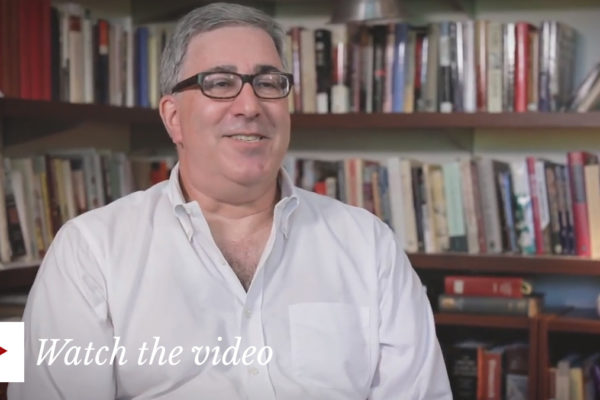WUSTL students in an interdisciplinary course this semester called “Economic Realities of the American Dream” were urged to consider the meaning of the American Dream and explored pathways to achieving it, including overall economic growth and rising standards of living, equality of opportunity, economic mobility and the availability and creation of jobs that will adequately provide for individuals and families.
In 1931, James Truslow Adams first defined the “American Dream” by writing that “life should be better and richer and fuller for everyone, with opportunity for each according to ability or achievement” regardless of social status or birth circumstance.
In a modern society struggling to loose the grip of a lengthy economic recession, is this dream really attainable?
The dream may still be possible, though much more difficult to achieve, say a renowned macroeconomist and one of America’s foremost experts on poverty, co-teachers of a course on the American Dream this semester at Washington University in St. Louis.
“The American Dream is really at the heart and soul of this country,” says Mark R. Rank, PhD, the Herbert S. Hadley Professor of Social Welfare at the Brown School and author of One Nation, Underprivileged: Why American Poverty Affects Us All.
“It’s the idea of what we stand for and what we represent — the idea of being able to pursue what you are really passionate about and to have a good life,” he says.
The interdisciplinary course, “Economic Realities of the American Dream,” came out of a long friendship between Rank and his co-teacher Steven Fazzari.
“I’ve read Mark’s books and being an economist they really got me thinking about perspectives on the realities of economic life in this country and how we formulate those ideas into this concept of an American Dream,” says Fazzari, PhD, professor of economics in Arts & Sciences.
He says the class has focused on three main components — the freedom to pursue what people want to do to reach their potential, the ability to have a secure and comfortable life and a sense of hope and optimism about the future.
“Many people think the American Dream is owning a home,” Fazzari says. “That may be one way to reach economic security and a sense of hope for the future but maybe it’s more of a pathway to the dream than a component of the dream itself.”
Students in the course examined the meaning of the American Dream and explored pathways to achieving it, including overall economic growth and rising standards of living, equality of opportunity, economic mobility and the availability and creation of jobs that will adequately provide for individuals and families.
“I decided to take this course because I wanted to experience the interdisciplinary approach that both professors provide,” says Doug Griesenauer, second-year master’s of social work student. “My view of the American Dream changed dramatically throughout the course. When it began, I understood it as more of an ephemeral idea, a concept that everyone really knew but you couldn’t pin down.
“Through discussions with both professors, we have been able to give substance to that idea and really understand what made the American Dream such an aspiring thing.”
Students participated in group projects and discussions from a variety of perspectives, including economics, sociology, social work and others.
“I’ve worked a lot with Professor Fazarri on Keynesian macroeconomics but living in St. Louis has gotten me really interested in issues of poverty and social justice,” says Madeleine Dapp, a junior mathematics and economics major in Arts & Sciences.
“I saw this course as a good opportunity to combine those two perspectives,” she says. “After I graduate, I’m hoping to work in agricultural policy. I think this class has really allowed me to more closely examine the problems that prevent people from accessing the American Dream, whether it’s problems with nutrition or something more economic.”
The interdisciplinary nature of the course has been its strong suit, Rank says.
“We have students from economics, social work and several other social sciences,” he says. “Having that mix in the classroom is really dynamic and provides a lot of interesting feedback, questions and discussions that help advance all of our thinking.”


